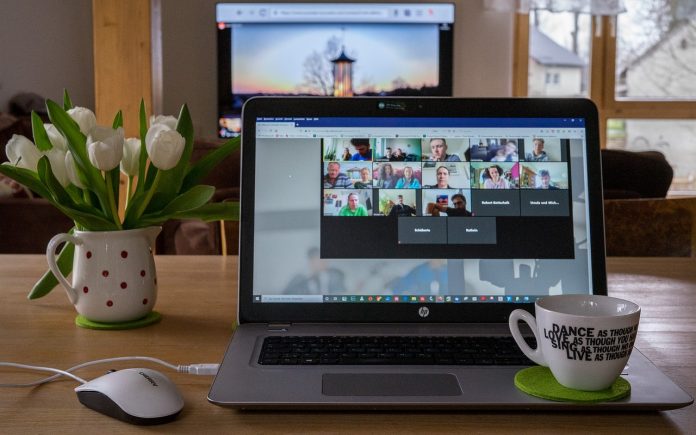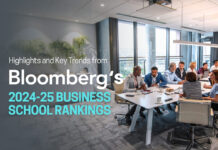By Fernanda Arreola and Pierre Daems
During the period of confinement, organizations around the world were forced to develop new tactics and strategies for orchestrating new forms of work and collaboration. This extreme situation, that we can observe as a natural experiment forced companies to try a fully virtual work environment. In this article, we share our views of 10 managers around the world, who were forced to engage in new ways of collaboration with their teams, gained a new perspective towards the limits, opportunities and new challenges of virtual coordination.
Motivation in the workplace
The study of motivation in the workplace had its formal beginnings in the theories of Abraham Maslow1, who contended that motivation is the natural desire of humans for always wanting to improve their belongings or to satisfy more ambitious needs. The research on motivation has therefore acknowledged that we all are at different levels of a “needs pyramid” and that our demands belong to the desire to achieve a superior level of accomplishment of such needs.
Research on engagement at work also acknowledges that, the needs of the workplace are composed by different aspects of our environment that pertain to at least three domains: the fit with corporate values and the strategic sense we find in what we do (“want”), the support, empowerment and collaboration to be able to concretize our work (“can”) and the consideration and recognition we receive (“be”)2. Other studies signal, that a “good place to work” is one in which we are able to, other than finding sense to our contribution, we can profit from a social environment where we are able to collaborate and a leadership that drives us in the right direction3.
But for all of these variables, the undergoing confinement conditions make us consider if a virtual collaboration is a good enabler of the central items in the motivation or engagement at work framework. This is because, while online collaboration can bring beneficial effects to the incorporation of new practices, the improvement of the efficiency of more available teams (less concerned by travelling or transport times) and more information for managers (thanks to an increased number of meetings4) other more human and practical aspects of face to face collaboration, may have been endangered or disrupted.
A multi-country perspective: learnings and practices in a fully virtual environment
For our study, we interviewed 10 managers with direct reports around the world, who worked under confinement conditions, in order to evaluate if their perspectives and experiences, brought a similar and comprehensive understanding to the challenges and opportunities of working online.
During the confinement, working fully online, our interviewees experienced the following advantages and limits:
Advantages
- More efficiency when working on specific task – in the finance team of a French Insurance company, 40% of managers said that remote working is more efficient than working from the office, particularly for production work – excel sheets – only 3% consider it less efficient
- More engaged teams – in the same finance team of a French Insurance Company, 35% of managers said that teams are more engaged with remote working – only 3% less engaged
- Increased personal well-being – depending on individual situations, for example, people appreciated working from home if they had a house with a garden and a designated workspace/office
- Openness of managers for encouraging alternative ways of collaboration including letting people work on less traditional schedules – for example a manager shared that he let his web designers work from 1pm to 10pm every day, which fit their preference and lifestyle
- Increased transparency in the communication – one of the managers expressed that for his company it was fundamental to be open about the number of COVID cases, the financial state of the company and the strategic steps taken during the period. This reassured workers and made them trust their management
- Shorter and more efficient meetings – for example, a manager expressed that it’s the first time that meetings are starting on time and that everybody is focused on achieving objectives in the best possible timing
- Discovering people (or rediscovering) – a manager in a service firm said she was pleased to see many people, who would usually be on the field and therefore hard to cross, connected to virtual meetings
- Discovering humanity (the personal lives of others) – a great majority of managers shared that, in looking at the personal lives of others (pictures, kids crossing, decorations, pets and other) they felt a redeemed proximity and a more human interaction
- Boosting creativity in some tasks – a manager said that he saw a peek in the ability of marketing designers to create nicer visuals (the employee said he felt more comfortable working in a dark room from his home). This was also the case for another manager, who’s marketing budget was cut by 25% and saw his team’s implementing free digital tools that led to a similar number of leads than with the previous budget
- Team’s cohesion – a feeling of fairness and shared situation was seen on the majority of managers, expressing it as a sentiment of “being on the same boat”
- The Hero’s syndrome – some employees gathered a sentiment of heroic or exceptional performance, which, boosted by a feeling of recognition, boosted the confidence of many employees.
Limits
- Personal well-being – many managers talked about a decrease in their employee’s (and their own) well-being, either for having uncomfortable settings (lack of appropriate chair, or workspace) or for the loss of some services (a manager in IT said that now, she had to spend one hour cooking, when before she had a very good cafeteria on site, where she could eat for free in 20 minutes) about people being in uncomfortable personal positions that (depending on individual situations – e.g. not for women )
- The personal schedule interrupting the day – many managers discussed the lack of separation between private and professional life
- Lack of personal interaction with colleagues and clients – managers mentioned that because of the need to schedule a meeting the informal interaction became non existing (small talks – coffee machine + share and help each other)
- Lack of willingness to cooperate – many managers expressed some employees were too impacted by the sudden change and conditions and felt unable to collaborate.
- Lack of competence for working from home – some managers discussed that some of their employees were simply not fit to work from home. A manager even mentions a case of an employee drinking an alcoholic beverage during a meeting.
- Lack of tools – many managers said they were simply not ready from an IT perspective, to face the online environment.
- Lack of trust – some managers mentioned they were still dubious of the fact that their workers were doing their activities as expected.
- Lack of accompaniment – managers said that they had received complaints about a feeling of “loneliness” from their direct reports, who did not feel the same level of follow up and availability from their managers.
- Very difficult to welcome and integrate new employees – a manager said that newcomers had a specially hard time understanding the organization and taking confidently over their new job
- More difficult for teams to work on projects, especially when practicing the agile methodology – manager mentioned that It’s very difficult to work remotely at the beginning of a project
What we know and how to make our work better?
The list of the activities and actions that are more likely to engage collaboration and enhance performance, gives us an idea of the considerations that companies must have when rethinking the future of online and offline collaboration. In observing some of the advantages and disadvantages experienced during the confinement period, we notice that it is essential to connect online and offline collaboration practices to the employee experience and a firm’s culture. Following, we make some recommendations on the considerations companies must have if they decide to permanently change their online and offline collaboration practices.
- A firm’s online/offline practices must be adapted to the overall working conditions of the individuals that make part of each team (personality types – DISC, personal situation – home/family, type of function in the organization, …). Neglecting the fact that individuals are limited by their personal environment, can lead to inefficiencies in teams were wide gaps of accessible or appropriate resources and competences exist
- A firm’s online/offline Practices should be adapted to the different moments of the employee experience (production of a document, meeting to discuss a project with colleagues, seeking help, welcoming a new employee, evaluating a team member, fostering small talk amongst colleagues, hosting a creativity session, leading a seminar, holding an executive committee meeting, animating a workshop on engagement/values, ….)
- A firm’s online and offline practices should acknowledge the cultural adaptation curve. This curve explains to us that peaks of frustration and of excitement exist in the deployment of a novel cultural environment. During the Covid firms experienced such curve, and therefore they may be capable of determining at which phase of the curve they are located, in order to avoid overcharging teams during periods of frustration or confrontation.
In conclusion, choosing the right practice (online, offline or hybrid) for the right moment is not an easy task. This requires a strong organization of work that can assure that employees are on-site when the moment requires a physical connection (meet a new employee, seminar, creativity session, …) and online when they must work remotely. It also demands a lot of flexibility and trust so that employees can adapt their agenda to be either online or offline. Managers must also leave space for employees to adapt to these new methods, and avoid taking the upper phases of the cultural adaptation curve, as the new level of performance expectations. Managers should therefore acknowledge that more virtual exchanges do not mean increased productivity for all.
About the Authors

Fernanda Arreola is the Dean of Faculty & Research at ISC Paris. She is also a Professor of Strategy, Innovation & Entrepreneurship and a researcher that focuses on service innovation, governance and social entrepreneurship. Fernanda has held numerous managerial and possesses a range of international academic and professional experiences.
 Pierre Daems is CEO of Aube Conseil, a strategy and management consultancy based in Canada and France . Pierre is a certified expert in Customer Experience Management (CCXP) and co-founder of the CXPA (Customer Experience Professional Association) in Montreal and Paris. He contributes to make organizations more sustainable helping them to develop a purpose that takes in consideration the experience of all stakeholders (« Human Experience »).
Pierre Daems is CEO of Aube Conseil, a strategy and management consultancy based in Canada and France . Pierre is a certified expert in Customer Experience Management (CCXP) and co-founder of the CXPA (Customer Experience Professional Association) in Montreal and Paris. He contributes to make organizations more sustainable helping them to develop a purpose that takes in consideration the experience of all stakeholders (« Human Experience »).
References
1. https://sg.inflibnet.ac.in/bitstream/10603/7182/7/07_chapter%202.pdf
2. Based on the MC2 model available on https://www.aubeconseil.com/documents/Fiche_MC2_Aube_Conseil.pdf
3. https://www.greatplacetowork.com/best-workplaces – international /world – s – best – workplaces/2019
4. https://hbswk.hbs.edu/item/you – re – right – you – are – working – longer – and – attending – more – meetings
5. https://www.mckinsey.com/business-functions/organization/our-insights/covid-19-and-the-employee-experience-how-leaders-can-seize-the-moment


































